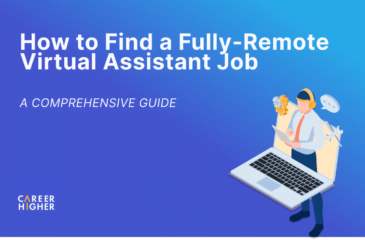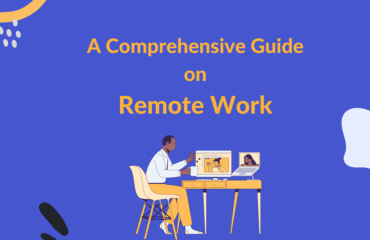Table of Contents
Devising an effective job search plan is an integral task along the path to landing your preferred role. A job search plan is a series of actions you undertake to elicit an offer from your target employer. Finding your next position can be an effort-intensive and time-consuming exercise, and failing to strategize may lead to negative repercussions. Ensure you are amply prepared and have the right resources at hand.
An effective job search approach equips you well before you actually apply for your target job. It helps you track all your activities and manage your time efficiently. Ideally, you should take the following steps:
1. Research the industry and role
Think of this as a “funnel approach.” As though you’re beginning at the top of a funnel, start by taking a broad view of your job search. Attain a clear understanding of your target role and industry. Neglecting to carry out this step with the utmost attentiveness and clarity could lead to a prolonged time and energy drain.
At this stage, it’s helpful to research the industries you may fit into. You’ll gain deep clarity regarding their various products and services, job markets, top players, growth rates and performance, pros and cons for employees, and trends. This stage is all about exploring your options.
Researching the roles you’re interested in within your target industries is equally important. It will give you a more comprehensive grasp of each job’s scope, clearly highlighting the nuances of their associated demands and responsibilities. By comparing a variety of industry roles, you can determine how well each one aligns with your qualifications.
2. Understand your fit
Your investigation of potential industries and roles can illuminate your compatibility with your target industry. Progressing down the job search planning funnel, ensure that every aspect of a position aligns with your interests in the long run. After all, a poor match may lead to negative consequences for your career and well-being. In a survey, CareerBuilder found that two out of three workers realized a job was a bad fit only after accepting it.
Concentrate your efforts by listing your key strengths, achievements and experiences, then discerning which role within which industry is most consistent with them. If you decide to transition to a new industry that does not align as well with your expertise, you must put extra effort into carving a niche for yourself. Noting your lack of experience and expertise, employers may be less apt to consider you unless you convince them of your motivation through a well-written cover letter.
3. Choose your target industry and role
After you have analyzed and compared your options, considered your interests, and identified the most attractive position, settle on your target industry and role. The safest bet is to target a few related roles in the same industry, such as jobs that share similar requirements and experience. For example, a person with a background in HR can apply for both HR business partner and project manager roles. This also comes with an added advantage of targeting different industries as the roles’ requirements and duties are similar amongst various industries.
4. Research prospective employers
Once you have selected your target industry and role, move down the funnel by pinpointing your ideal employers. Narrow your search options to companies of the size you would prefer. For example, professionals who find working with start-ups rewarding visit sites such as AngelList (Currently Wellfound) and Seedtable. Check websites such as Fortune and Glassdoor to view overall lists of “best companies to work for.” Explore desirable companies’ people and content on LinkedIn to gather insight into their operations and culture.
Some company elements to keep in mind as you identify your target employers are:
- Core products and services
- Mission and vision
- Recruitment information such as roles advertised, minimum qualifications required, and recruitment process
- Culture and values
- Brand image
5. Prepare your documents
Your target employer list is the springboard for the next stage of your job search plan. Once this list is ready, identify relevant vacancies advertised by the employers. Then, prepare a resume and cover letter for each position that is customized to distill the most pertinent information about you related to that role. Your objective is to illustrate how well you are suited for the role from the employer’s perspective. This will increase your chances of receiving a positive response from your target employers.
Your resume should be error-free and smoothly relate to your story. Your cover letter must convey your career goals while persuading decision-makers of the value you’ll add to their company. Employers often check applicants’ social media accounts, and about 54% of them reject candidates based on their social media profiles. Thus, it is necessary to be judicious about your social media practices and make the most of LinkedIn, which employers see as a high-priority indicator of a candidate’s quality.
6. Network with target company employees
According to a study conducted by ERIN, referred candidates are four times more likely to be hired. The takeaway? Networking is a must. Once you’ve zoomed in on your target role, company, and industry, it’s time to network strategically. Scrutinize your personal and professional network, expand it if required, and initiate conversations with people from your target companies. You’ll win more time from the decision-makers on your application, and recruiters will be more likely to linger on your resume to understand your experience and expertise.
Speaking with people from the organization will also cast light on its culture and environment. With deeper insight into these factors, you’ll more easily decide whether you really want to work for the company or not. Even if the new connections fail to facilitate your current job search, you’ll develop relationships that can help you in the long term.
7. Apply
Having customized your documents for each vacancy and networked with relevant people, you’ve reached the bottom of the funnel: the application stage. To keep your efforts organized, maintain records by creating a spreadsheet. Each row can include the company name, target position, the date you applied, the vacancy closing date, and the application status. You can also use sticky notes, online or offline, as reminders to track current and planned applications.
Another crucial component of job search planning is maintaining a schedule. A common dispute centers around whether or not job seekers should submit applications every day. Remember: quality is always superior to quantity. Thus, applying for positions every day is less beneficial than devoting time to quality applications, irrespective of the interval between them. Some applications require more dedication and effort than others. Decide whether you want to spend two hours per day for three days a week or one hour each day, and commit to it. Consistency is important, but not at the expense of quality.
Searching for a job may seem tedious and exhausting, and it can be. However, by taking an intelligent, efficient approach, you can achieve enviable results. Deciding what you want is the key to your job search plan. Make sure to spend ample time researching your options and realistically considering your compatibility with a company before making any decisions. Once you’ve completed these steps, it will be only a matter of time before you celebrate your first day in your dream role.











